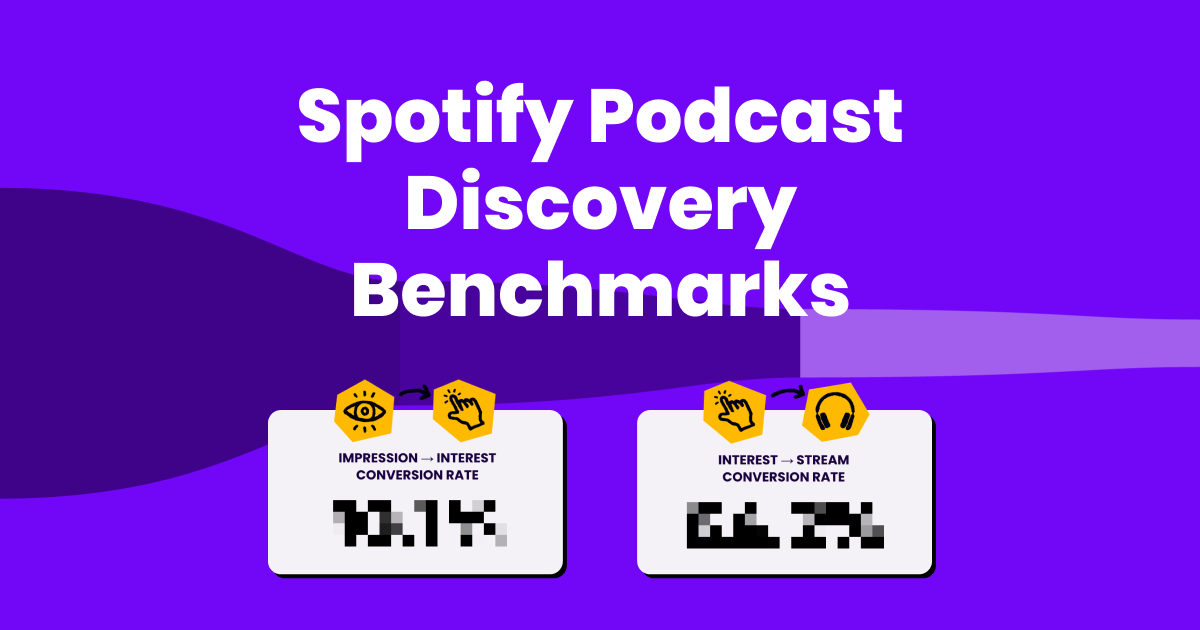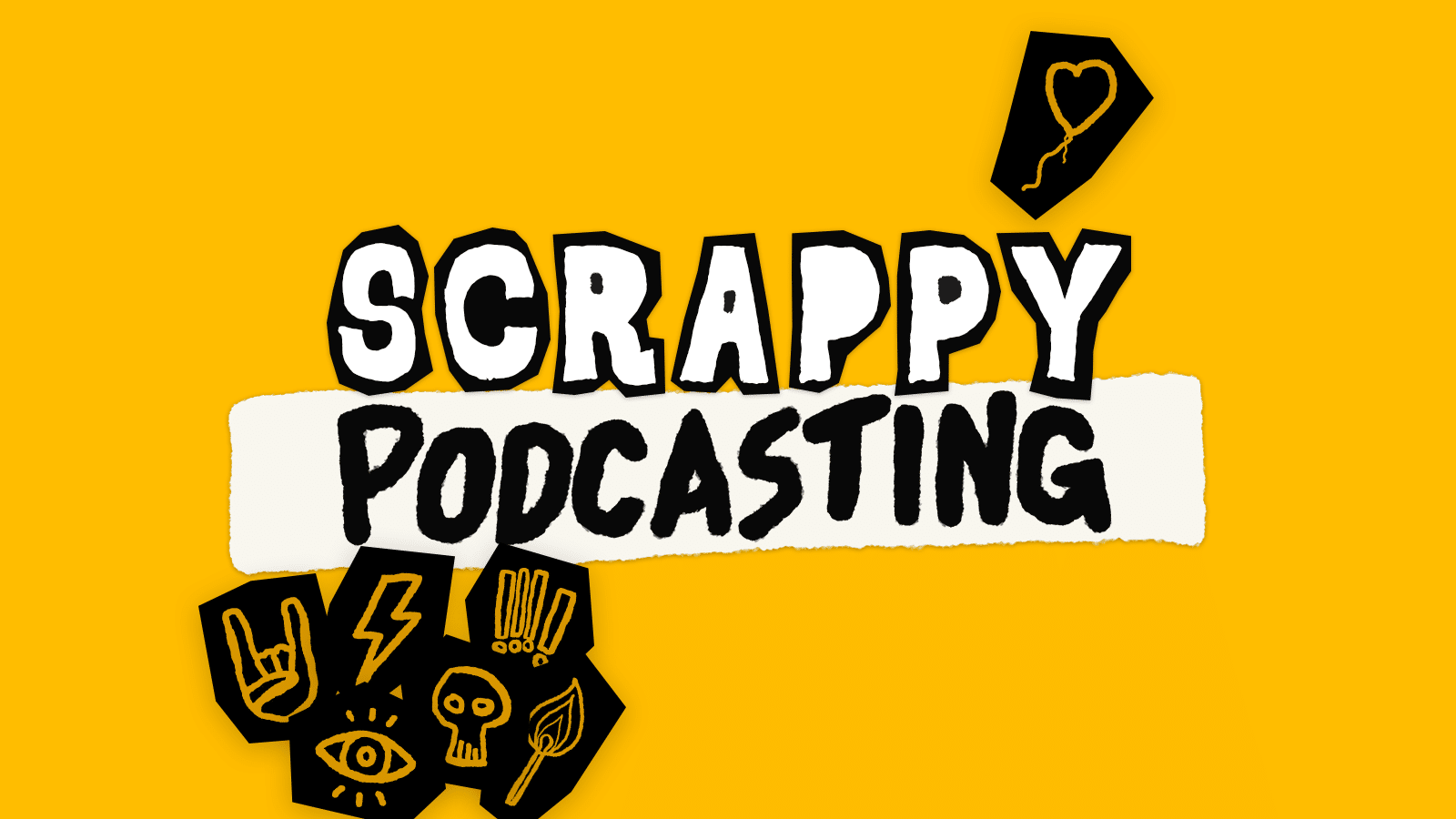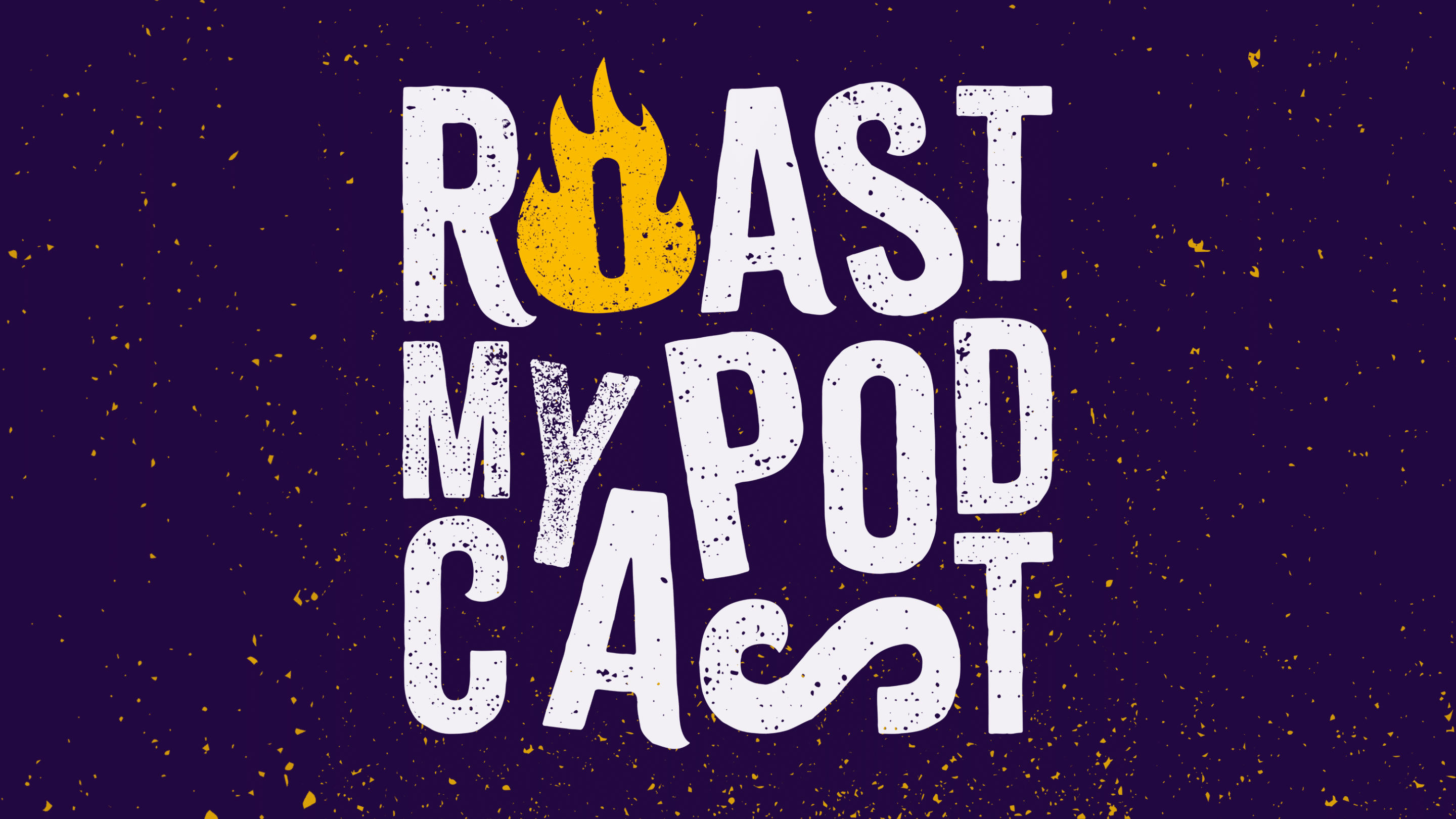Podcast Marketing Trends 2025 Report
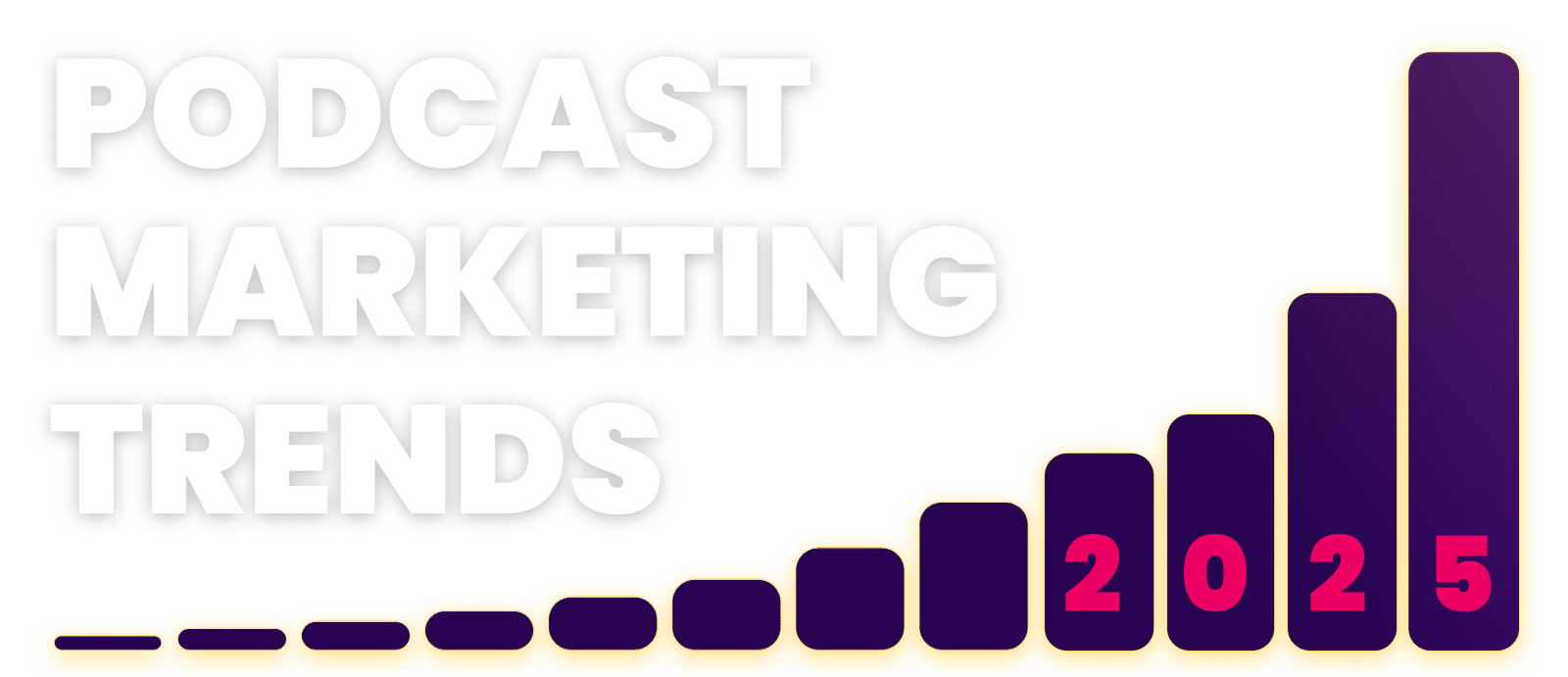
Presented By

The very definition of what a podcast even is.
No doubt about it: Podcasting is changing fast.
And what it takes to market, grow, and profit from podcasting is too.
This report exists to get to the bottom of that simple question…
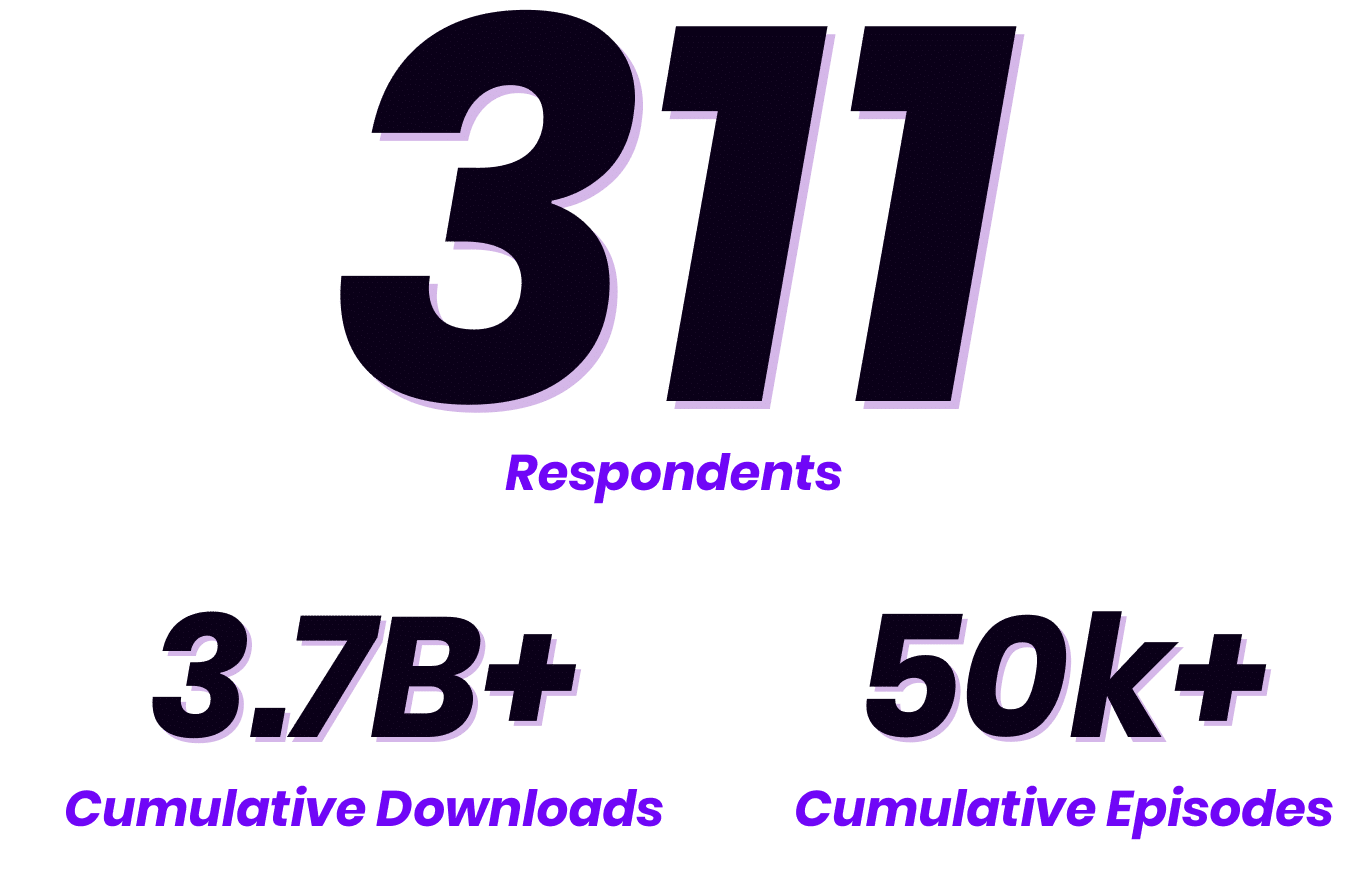
What are the factors that contribute to podcast growth in 2025?
To attempt to answer it, we enlisted the help of 311 podcasters and industry professionals from a diverse set of personal backgrounds, niches, formats, and experiences.
In Q1 of 2025, we asked them to complete a sadistically long and detailed survey, sharing month-by-month episode data, marketing activities, and a whole lot more.
To our delight many were more than happy to do so.
How We Broke Down The Data
High vs Low Growth
Our primary focus this year was to identify the differences between high-growth and low-growth shows—regardless of their size.
To do this, we divided the responses into four annual growth rate segments based on self-reported download data and cross-analyzed various other data points.
Throughout the report, we’ve represented these 4 distinct groups as follows.

Big vs Small
Our secondary comparison was the differences between big shows vs smaller shows.
To do this, we divided the responses into three downloads-per-episode segments based on their self-reported download data and cross-analyze various other data points.
When comparing show size, we’ve represented these 3 groups as follows.

Downloads Per Episode Distribution
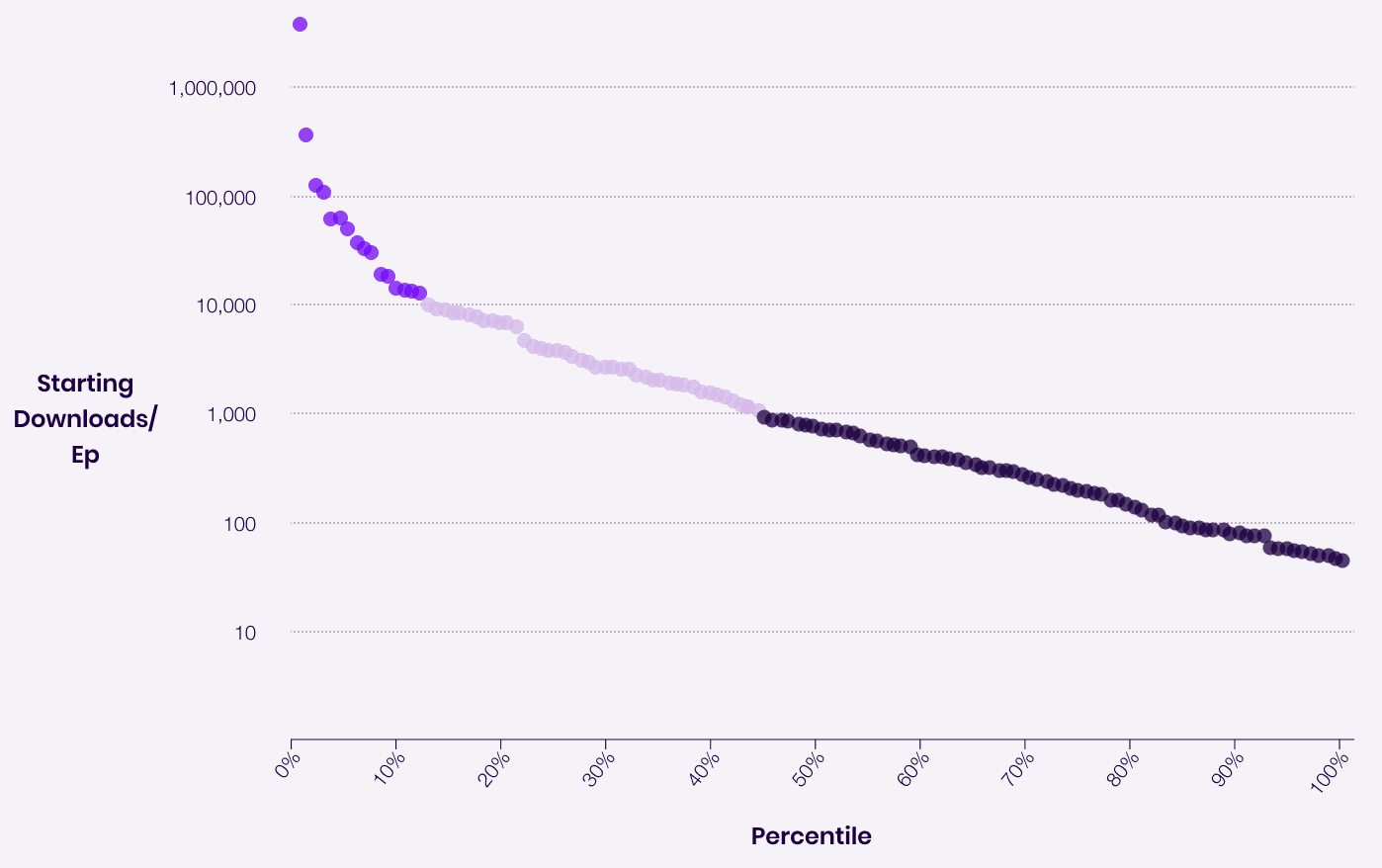
Methodology
Growth Rates
The median show at the start of the year had 428 downloads per episode, with the median show at the end of the year posting 516 downloads per episode, a growth rate of 21%.
We divided the shows into four segments relative to this median show growth rate, two above and two below, as follows:
High Growth Shows (>100% Growth): Shows that grew by 100% or more, more than doubling in size.
Medium Growth Shows (21–100%): Shows that grew faster than the median show but did not double in size.
Low Growth Shows (0–21% Growth): Shows that grew, but at a pace below the median show.
Negative Growth Shows (<0% Growth): Shows that shrunk in size on a downloads per episode basis.
Downloads Per Episode
We calculated downloads per episode by dividing each show’s total monthly downloads by the number of new episodes they released that month.
While this approach does not account for the impact of back-catalogue downloads, we preferred this rough downloads-per-episode approach over absolute monthly downloads as it better accounts for changes in publishing schedules.
01
About the Respondents
Our respondents offer a nuanced perspective on podcast creation and growth.
Together, they represent a diversity of continents, countries, languages, show formats, topic categories, reasons for creating, and more.
Here’s a little bit about who they are.
Role In the Podcast Industry
Show Purpose

Audio, Video, or Both?

Business Model
Respondents for whom generating an income is at least part of the reason they produce their shows, these are the business models they’re pursuing.
Podcasting Experience
3.8
Average years of experience
+8.6% from 2024

02
Benchmarks
While YouTube, Spotify, and projects like the Open Podcast Prefix Project are slowly making podcast data more transparent, most of the data in podcasting is still frustratingly opaque.
This lack of transparency makes it hard to know where exactly your show stands in regard to others—and which shows are worth studying to take inspiration from for your own marketing.
Methodology
For these benchmarks, we only used data from the 154 hosts that submitted a full 12 months of download data.
Annual Trends
Downloads Per Episode By Month
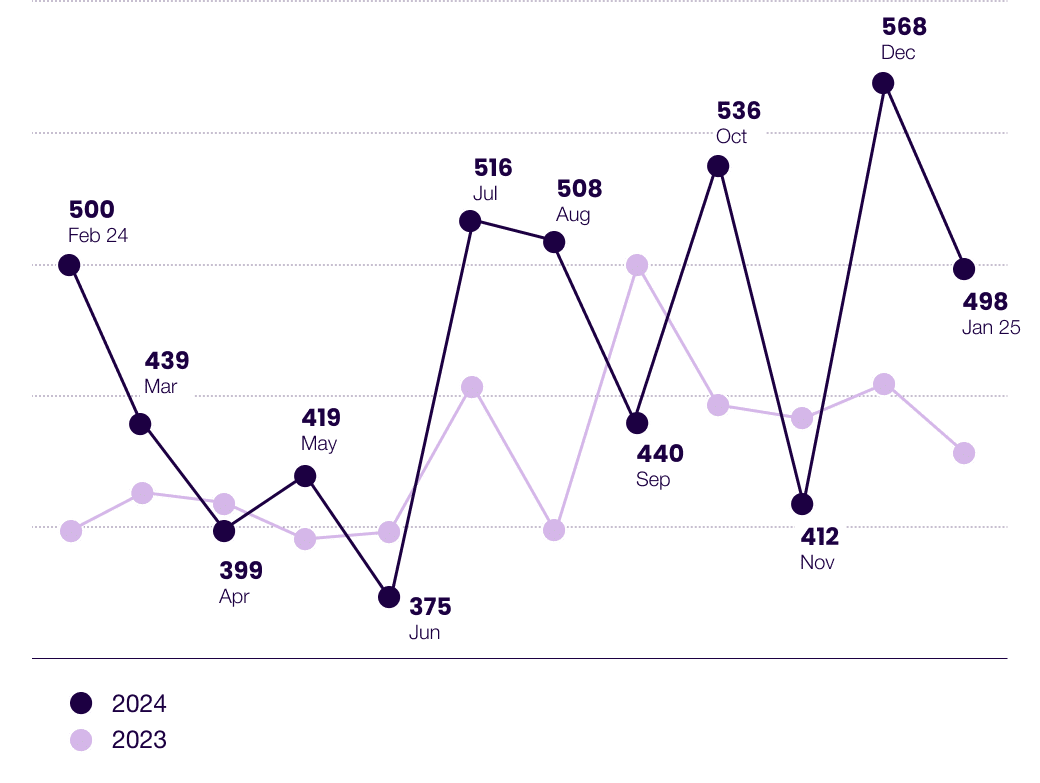
The Median Show Gets
469
Downloads/Episode
+10.4% from previous year
1,246
Downloads/Month
+10.1% from previous year
The Median Show Gets
469
Downloads/Episode
+10.4% from previous year
1,246
Downloads/Month
+10.1% from previous year
Downloads Per Episode By Month

Episodes Published/Month


Episodes Published Per Month
Key Takeaway
Perhaps more interesting than the individual monthly numbers are the differences from 2023 to 2024.
Keep in mind that 2024 was an election year in the USA—an election in which podcasting at times took center stage.
While relatively few of our respondents produce shows in the Politics category, the impact of the election surely played a role in listener consumption habits.
Could it be that the massive dip in monthly downloads in November was the result of general listener fatigue?
Or that the spike in December corresponded with speculation about how life would be changing with the incoming administration?
Perhaps, perhaps not. We’ll let you draw your own conclusions.
On the episode publish frequency side of things, it’s notable that on average, 2024 saw our respondents release an average of 4.7 episodes/month, up a whole episode from the 3.6 episodes/month in 2023.
Podcast Growth Rate Benchmarks
How quickly does the typical show grow?
As a podcaster, a benchmark growth rate allows you to calculate how many new listeners you can expect to bring in each month, which allows you to assess the effectiveness of your marketing, make better-informed growth & revenue projections, and a whole lot more.
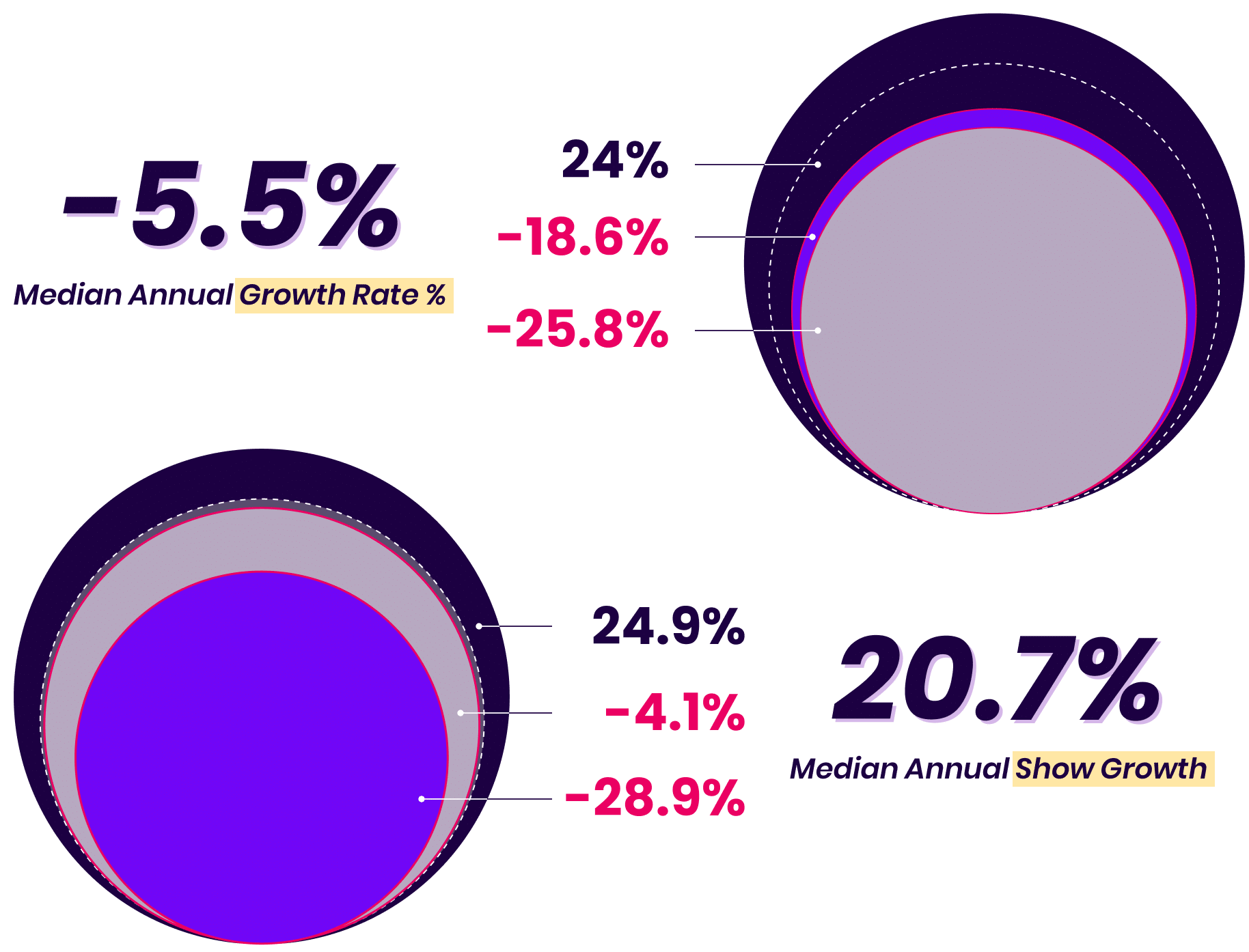
Two Ways to Look at Growth
This year, we measured the growth of our respondents shows’ in two ways.
The first is by Median Annual Growth Rate %—which is reached simply by calculating each show’s annual growth rate, and pulling the median value from the dataset.
This metric is helpful for understanding if the typical show was likely to grow, and if so, by how much.
The second measurement we used was what we’re referring to as the Median Annual Show Growth.
We calculated this metric by calculating the median dl/ep of the entire data set at the start and end of the year, and then calculating the growth between those start and end points.
This metric can be thought of as representing the “Center of Gravity” of the data set, and interestingly, tells a very different story from the Median Growth Rate %.
Annual Growth Rate Comparison
Individual Vs Collective Growth
The difference between the Median Annual Growth Rate % and the Median Annual Show Growth reflects a trend.
Over the past 3 years, the Median Growth Rate % has been declining, while the Median Show Growth has increased.
What does this mean?
In short, the trends suggest that while individual shows are experiencing less (and now even negative) growth, the collective pool of shows is growing faster.
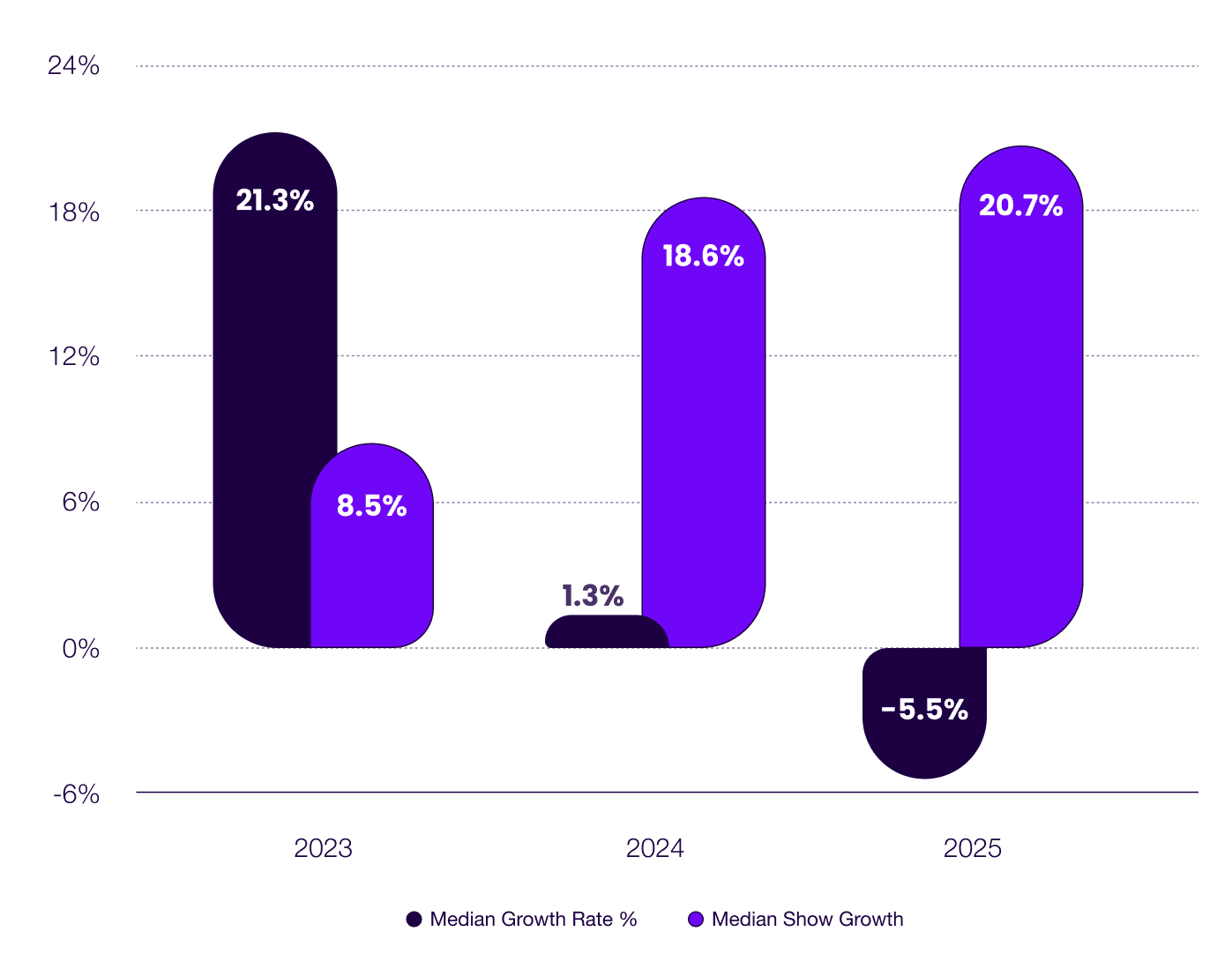

Individual Vs Collective Growth
The difference between the Median Annual Growth Rate % and the Median Annual Show Growth reflects a trend.
Over the past 3 years, the Median Growth Rate % has been declining, while the Median Show Growth has increased.
What does this mean?
In short, the trends suggest that while individual shows are experiencing less (and now even negative) growth, the collective pool of shows is growing faster.
Key Takeaway
In 2023, the first year we ran this report, we were a little depressed to see the annual median growth rate of just 21.3%, a number which has continued to decline each year, with this year being the first time the median growth rate has been negative.
In short: More shows shrunk this year (at least in terms of downloads) than grew.
But…
There are a few important caveats, and some signs for optimism.
Median Show Growth
While the majority of shows reported fewer downloads at the end of the year than at the start, the median show’s downloads per episode count had actually grown, from 428 to 469 dl/ep.
On the surface, this doesn’t make much intuitive sense, but if you look closer at the data, an explanation becomes clear.
While the majority of shows did experience a contraction, most of that contraction was experienced by shows with larger audiences that still maintained relatively strong download numbers.
Shows with fewer than 1,000 dl/ep, on the other hand, tended to grow, often quite significantly.
The result is that while most shows shrank, the big shows didn’t shrink enough to drag down the overall average while the small shows did grow enough to push the average upward.
In short, despite the scarcity of growth, the center of gravity nevertheless shifted upwards.
This, I think, is a win, and a sign of encouragement for small shows looking to break through.
At the same time, it’s a warning for big shows, that growth is not a given, and that what’s always worked before may no longer be as effective.
When it comes to the contraction, however, there’s another explanation to consider, which we’ll explore more in the coming sections.
Annual Growth Rate Distribution
As mentioned above, the high-growth category of shows was largely dominated by smaller shows.
Of course, this is always going to be the case. It’s easier to double from 100 to 200 dl/ep than from 100,000 to 200,000.
What’s notable however, is that there was just one show that began this year with more than 1,000 dl/ep that doubled in size, compared to last year when there were 8, including several that began the year with 100,00+ dl/ep.
Here’s the overall breakdown of growth rates by starting show size.
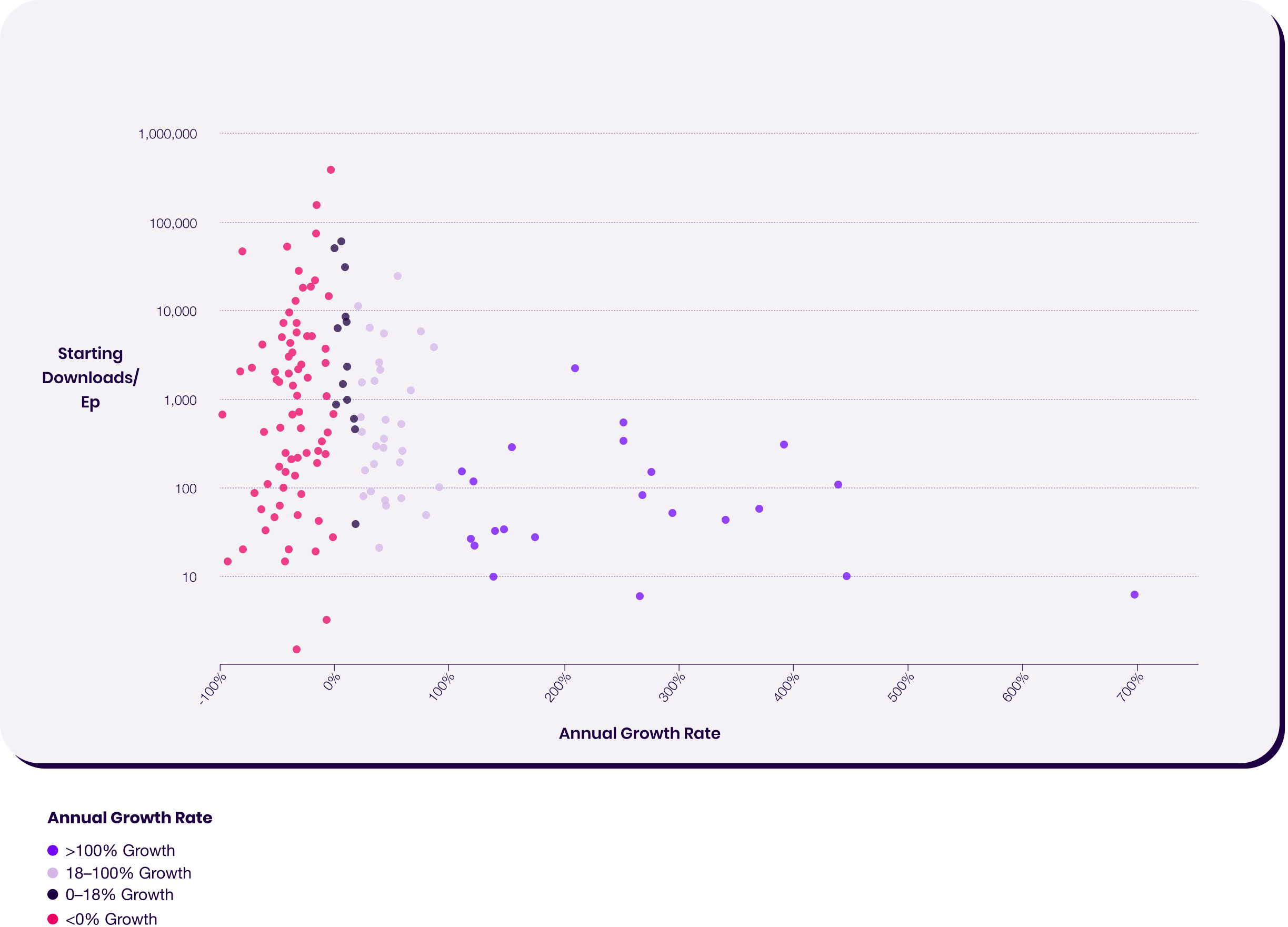
How Likely Is Growth?
Many creators assume that there’s nowhere to go but up after launching a show.
And while that might be true when you’re starting from zero, our findings clearly illustrate that for established shows, growth is not a given.
In fact, this year, it was more likely for shows’ download numbers to shrink than to grow.
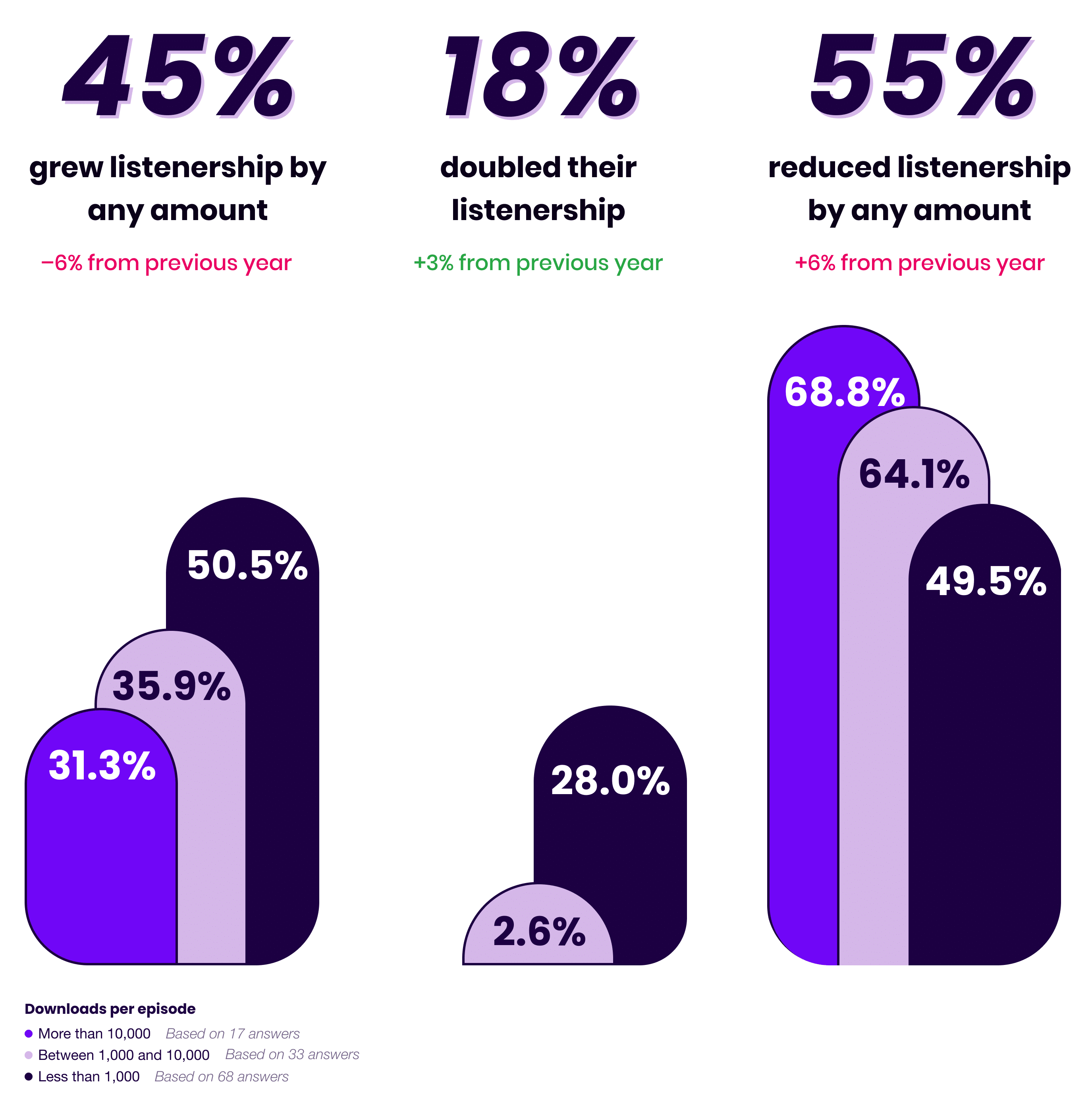
Key Takeaways
The fact that more shows contracted than grew is alarming (not to mention a little demoralizing) at first glance.
But is it possible that the decline in downloads are obscuring other forms of growth?
Not only is it possible, it’s highly likely.
Our growth rates are based on the monthly download numbers respondents submit from their podcast hosting platform.
Over the past few years, however, less and less consumption is being measured by RSS-based downloads.
YouTube “Views”, for example, won’t show up in your podcast hosting stats.
Neither will Spotify “Plays” if you’ve uploaded video versions of your episodes to the platform.
The result is an even more fragmented ecosystem where a show’s consumption numbers may be split across three or more platforms (each of which is measuring a slightly different metric, no less).
It’s not a stretch to imagine that many of the bigger shows—those most likely to have experienced a reduction in downloads—invested significantly in growing their YouTube and Spotfiy audiences over the past year via video content.
If so, it’s possible—likely, even—that their decline in downloads is actually masking growth in other forms of consumption on those platforms, which—once accounted here—may paint a very different story about the growth of these shows.
Podcast Episode Consumption Benchmarks
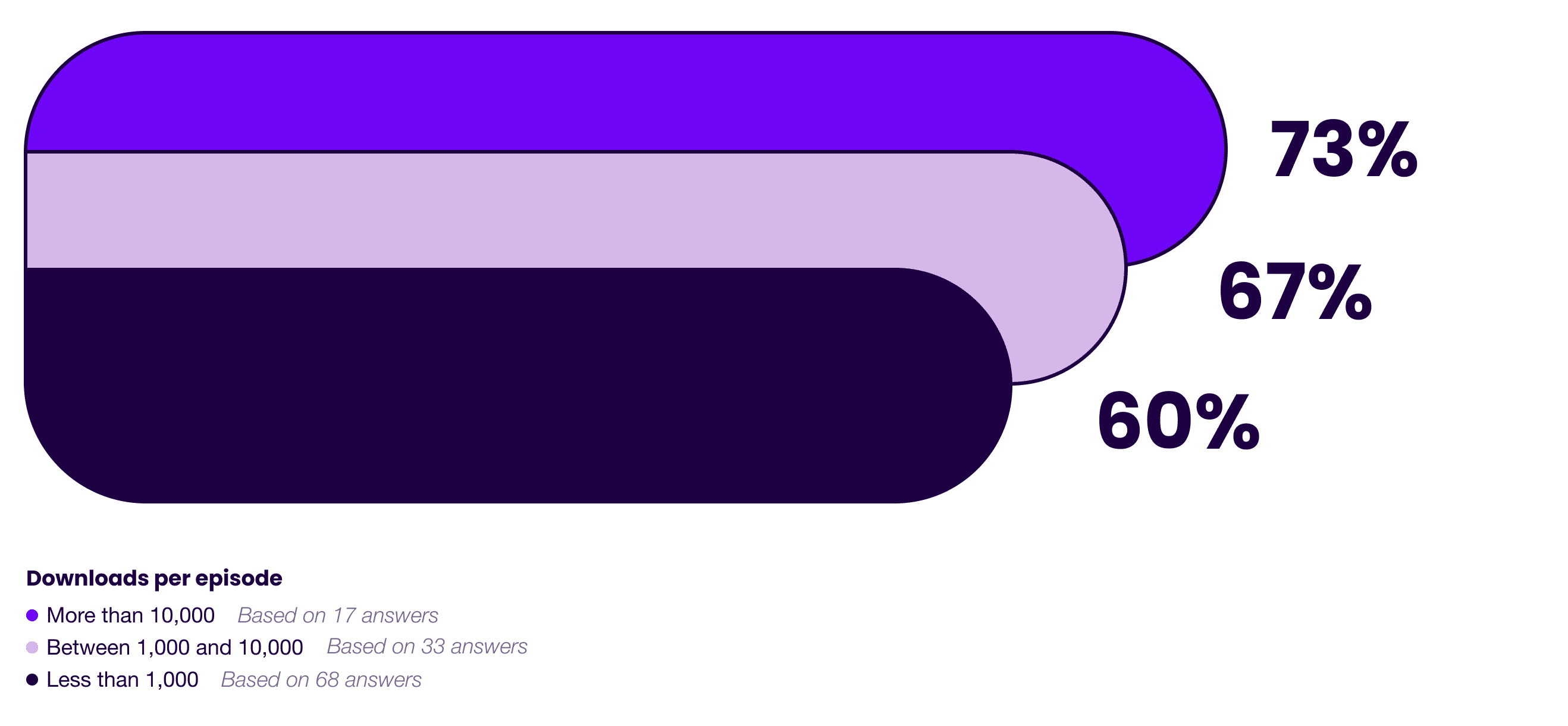
64%
Average episode consumption rate
-3.7% from 2024
Cross-Platform Audience Sizes
Given the lack of a universal in-built discovery & monetization structure for podcasting, it’s not surprising that podcasters tend to be multi-platform creators.
What’s more interesting, however is the growing number of podcast creators who are opting out of social media.
In this year’s survey, 5.5% of respondents indicated they are not active on social media, more than doubling from last year’s 2.7%.
When it comes to non-podcast content platforms as a whole, here’s how our respondents are faring, based on the median follower/subscriber count for each platform in our data set.
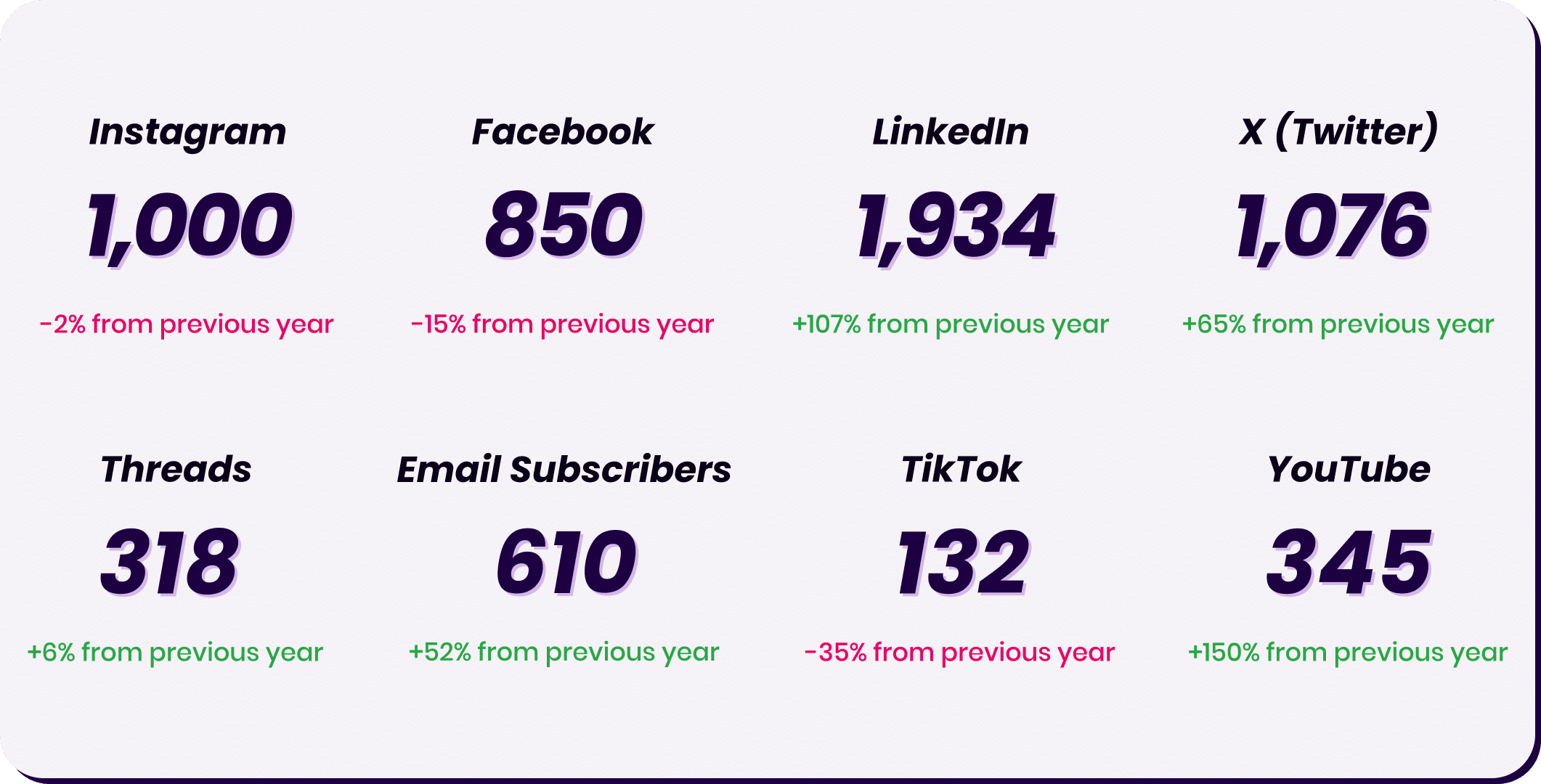
1,000
-2% from previous year
Threads
318
+6% from previous year
850
-15% from previous year
Email Subs
610
+52% from previous year
1,934
+107% from previous year
TikTok
132
-35% from previous year
X (Twitter)
1,076
+65% from previous year
YouTube
345
+150% from previous year
Cross-Platform Audience By Show Size

Key Takeaway
Given that the typical 10k+ dl/ep show has been active nearly three years longer than the average show, it’s no surprise these hosts have managed to build up larger audiences on other platforms as well.
While it’s impossible to prove, it also feels plausible that these long-term, highly successful creators have developed a better sense of how to create engaging content on any platform.
Note: The overall median numbers (seen in yellow on the chart) include shows that did not submit a full 12-months of download data whereas the size-segmented groups are based on the subset that did. This is why the overall median numbers are typically lower than the segmented groups who are necessarily more established.
Cross-Platform Audience By Growth Rate
Key Takeaway
It’s notable that the highest growth shows tended to have the smallest audience sizes outside of podcasting.
While it might, at first glance, seem contradictory, keep in mind that this year’s high-growth shows skewed heavily to smaller, less established shows.
On the flip side, the shows with the largest social audience tended to be those in the low-growth and negative growth categories—which skewed heavily to large, long-running shows.


Key Takeaway
It’s notable that the highest growth shows tended to have the smallest audience sizes outside of podcasting.
While it might, at first glance, seem contradictory, keep in mind that this year’s high-growth shows skewed heavily to smaller, less established shows.
On the flip side, the shows with the largest social audience tended to be those in the low-growth and negative growth categories—which skewed heavily to large, long-running shows.
Demystify Podcast Marketing
This report is just the start. Sign up to get a steady stream of daily, bite-sized (often unorthodox) podcast growth & marketing micro-lessons through our Scrappy Podcasting Newsletter.
03
Show Attributes Correlation with Growth Rate
There’s a lot to be said about the impact that specific marketing strategies and tactics have on growth. And we’ll get there.
But before we get to the tactical stuff, we wanted to look into various structural elements that are inherent to a show and their correlation with growth rates.
Show Topic By Growth Rate
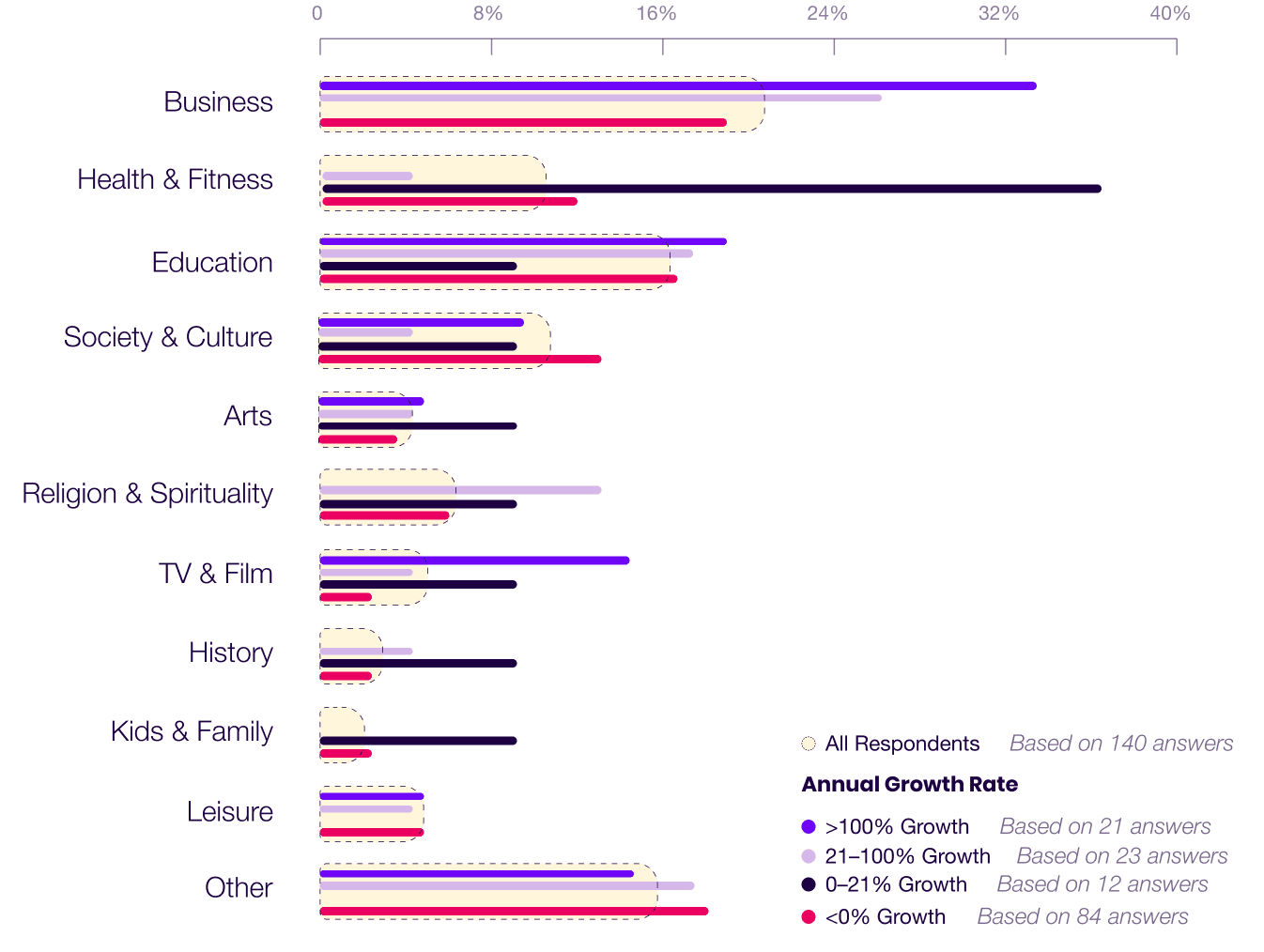
High
Growth Trends
Compared to the overall average, shows that grew by more than 100% were:
⬆⬆ Significantly more likely to be in the Busines and TV & Film categories.
⬆ Moderately more likely to be in the Education category.
⬇⬇ Significantly less likely to be in the Health & Fitness and Religion & Spirituality categories.
Medium
Growth Trends
Compared to the overall average, shows that grew between 21%–100% were:
⬆⬆ Significantly more likely to be in the Religion & Spirituality category.
⬆ Moderately more likely to be in the Business category.
⬇⬇ Significantly less likely to be in the Health & Fitness and Society & Culture categories.
Low
Growth Trends
Compared to the overall average, shows that grew by less than 21% were:
⬆⬆ Significantly more likely to be in the Health & Fitness, Arts, Religion & Spirituality, TV & Film, History, and Kids & Family categories.
⬇⬇ Significantly less likely to be in the Business, Education, and Leisure categories.
Negative
Growth Trends
Compared to the overall average, shows that shrunk were:
⬆ Moderately more likely to be in the Health & Fitness, Society & Culture and Other categories.
⬇⬇ Significantly less likely to be in the TV & Film category.
Show Format By Growth Rate
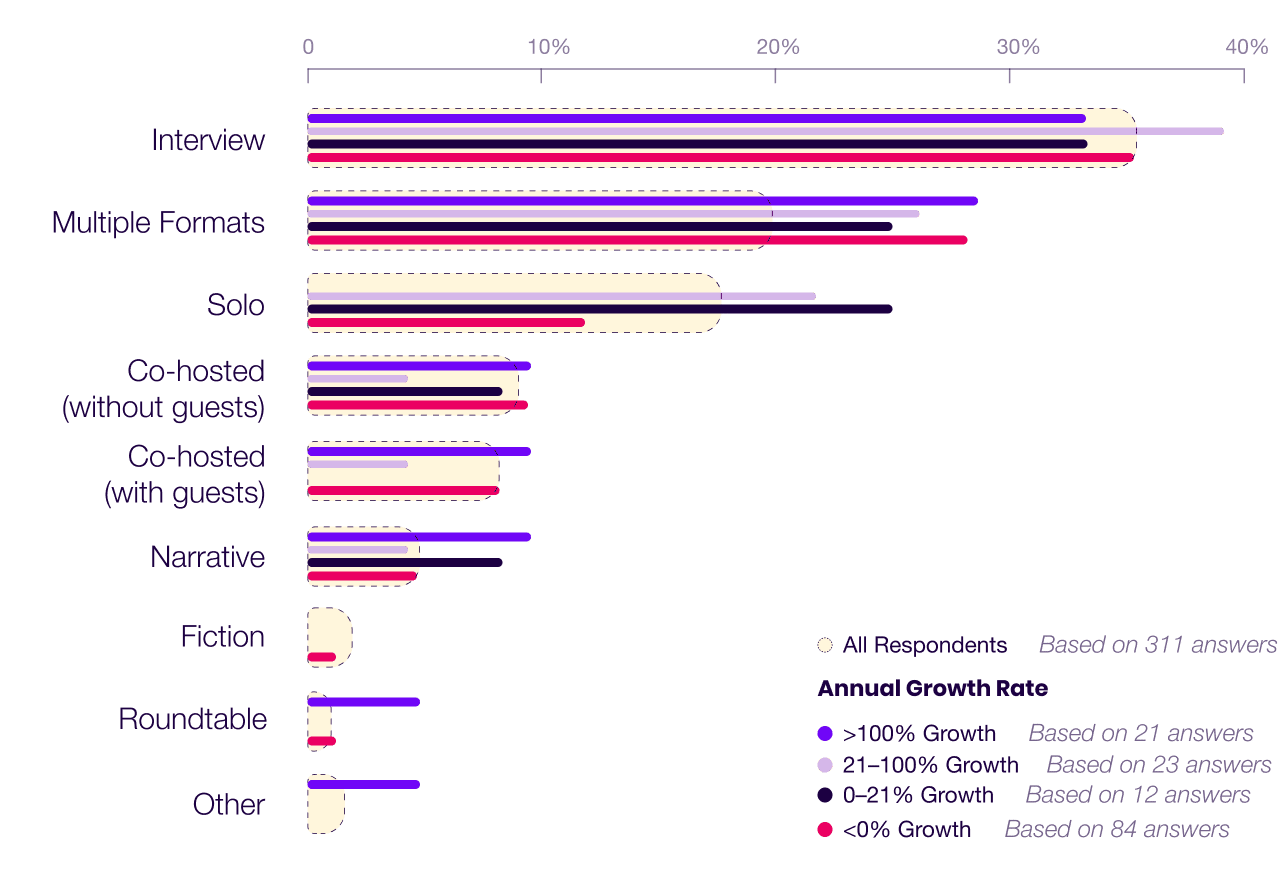
High
Growth Trends
Compared to the overall average, shows that grew by more than 100% were:
⬆⬆ Significantly more likely to use
Narrative, and Roundtable formats.
⬇⬇ Significantly less likely to use Solo and
Fiction formats.
Medium
Growth Trends
Compared to the overall average, shows that grew between 21%–100% were:
⬆ Moderately more likely to use strictly Interview, and Solo formats.
⬇⬇ Significantly less likely to use strictly Co-Hosted, Fiction, and Roundtable formats.
Low
Growth Trends
Compared to the overall average, shows that grew by less than 21% were:
⬆⬆ Significantly more likely to use strictly Solo and Narrative formats.
⬇⬇ Significantly less likely to use strictly Co-Hosted (with Guests), Fiction, and Roundtable formats.
Negative Growth Trends
Compared to the overall average, shows that shrunk were:
⬇ Significantly less likely to use Solo formats.
Publish Frequency By Growth Rate
In addition to looking at the median number of days between publishing episodes, we looked at two additional data points to get a sense of how a show’s publishing activity influences growth.
Those additional metrics are, “Has published an episode in the last 7 days” (Yes/No) and ” Has published an episode in the last 30 days” (Yes/No).
7.1
Median days between episodes
-3% from previous year
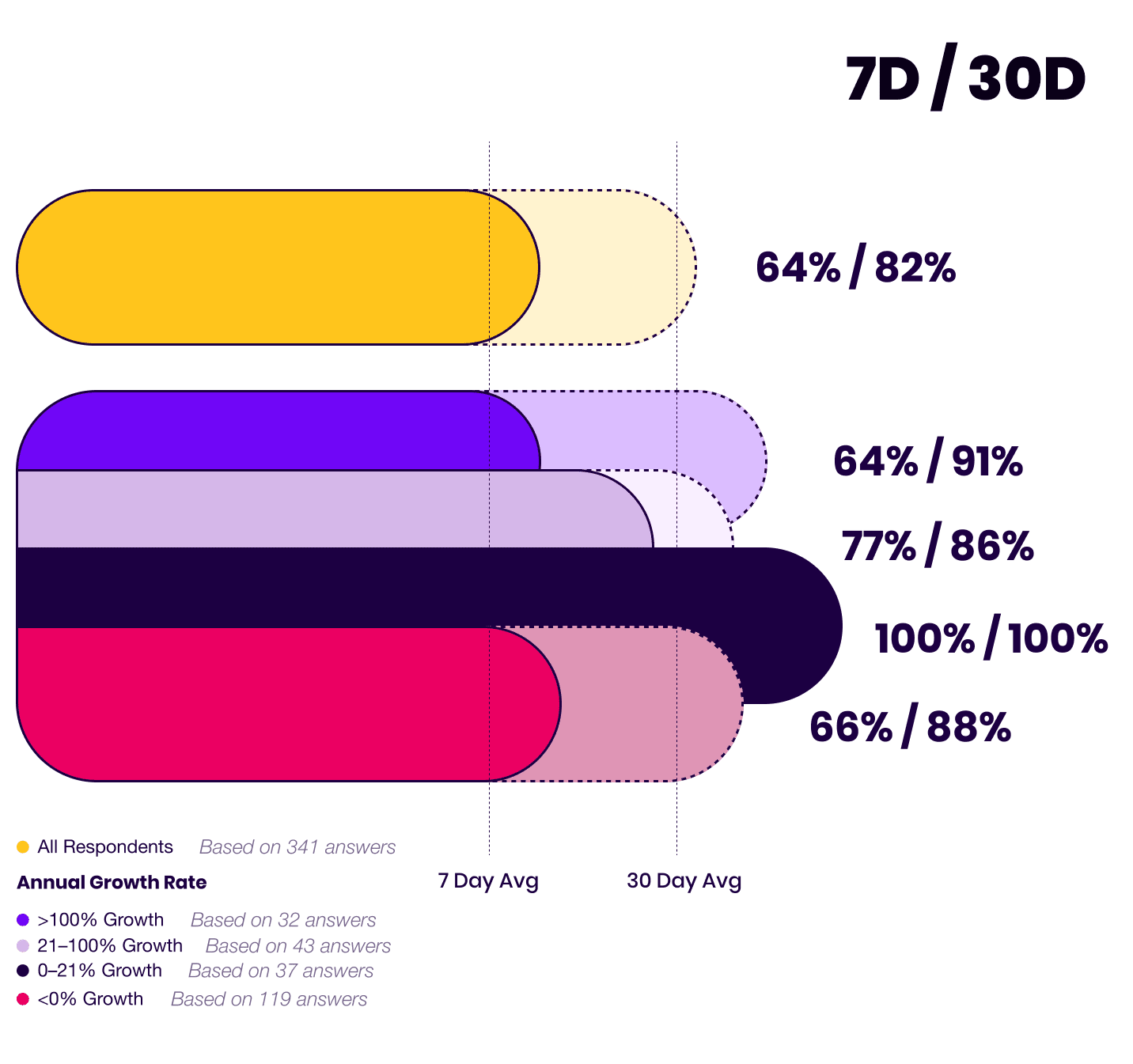
Key Takeaway
Once again, the vast majority of respondents had published an episode in the previous 30 days. Compared to the 2024 report, however, the differences in previous 7-day publishing are notable.
Compared to last year, significantly fewer of the highest growth shows had published an episode in the preceding 7 days (64% in 2025 vs 76% in 2024).
The same was true for the shows that shrunk.
Conversely, the low and medium growth shows were significantly more likely to have been published in the preceding 7-days this year (77% vs 58% for medium growth and 100% vs 52% for low growth shows).
Part of this might be explained by the fact that the low-growth shows were by far the longest-running, most experienced creators.
But what other explanations could there be?
Is it possible that there are currently growth opportunities for seasonal shows and those that follow less frequent publish schedules?
The data suggests the answer may be yes.
While the median episode release frequency for all other growth rates was every 7 days, the median for the highest-growth shows was only every 14 days.
Mega successful shows like Hardcore History and Acquired have shown that less frequent publishing schedules are not necessarily a barrier to growth—provided the content is exceptional, of course.
Is this a trend that more creators might be exploring to help combat burnout and create a more sustainable working relationship with their shows?
Episode Length By Growth Rate
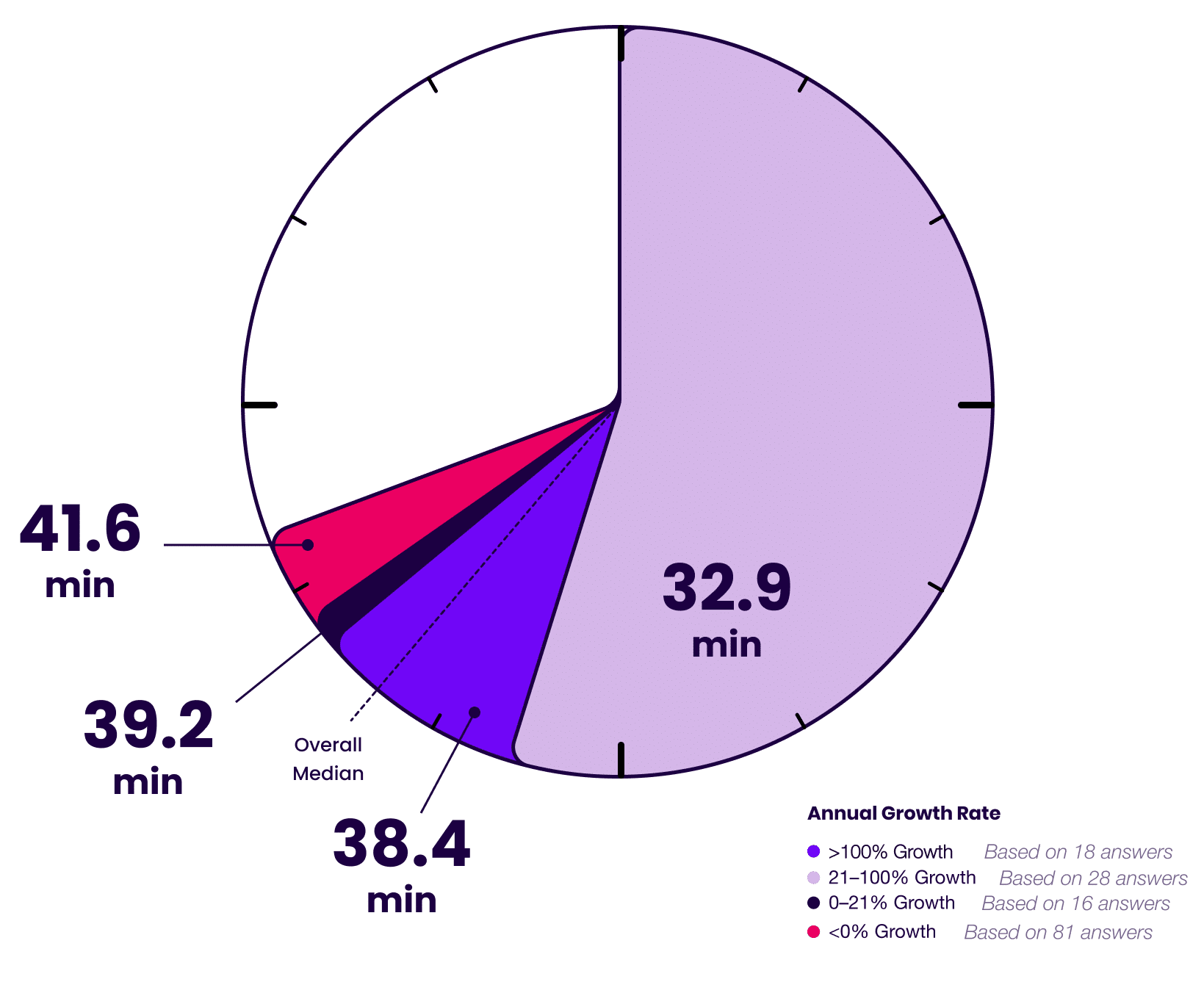
36.7
Median episode length in minutes
5% longer than previous year
Episodes Published by Growth Rate
108
Median number of episodes published overall
+40% from previous year
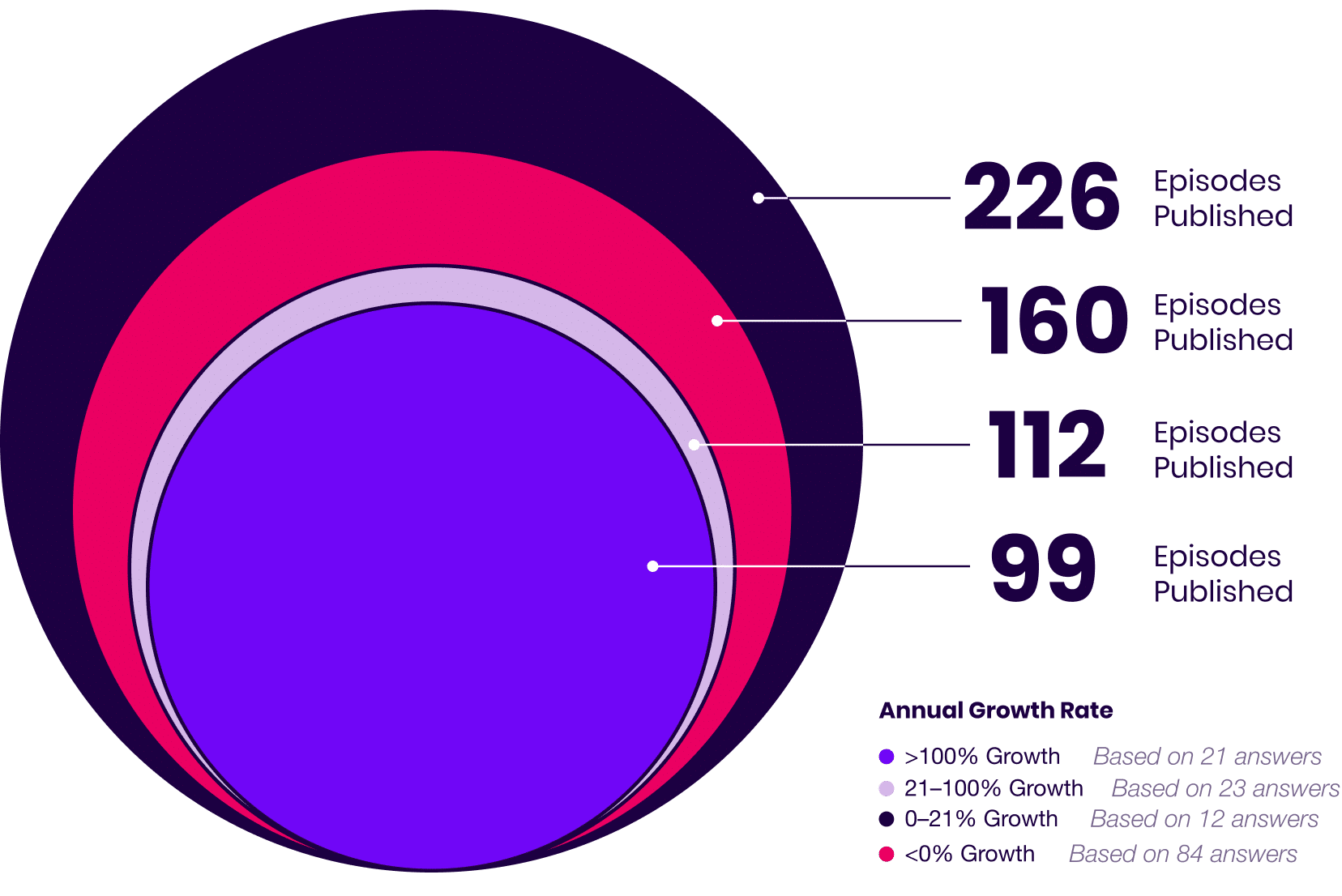
108
Median number of episodes published overall
+40% from previous year
Key Takeaway
From one perspective, you might think that longer-running, more established shows would be easier to grow.
They’re likely to have more resources, more experience, and more skill than a newer show that is just starting out, after all.
From another perspective, you might think that newer shows would be easier to grow, at least when it comes to annual growth rate.
It’s easier to 10x a show with 10 downloads per episode over the course of a year than a show with 1,000,000.
And yet, while we did find that shows with fewer episodes were more likely to grow (including more likely to double in size), the shows that did so were surprisingly mature.
The typical show that doubled in size, for example, had published 99 episodes shortly after the time of submitting their annual download data.
Given the fact that the median high-growth show published every 14 days, we can assume that most of the shows that doubled in size had already published between at least 50 episodes before their phase of significant growth.
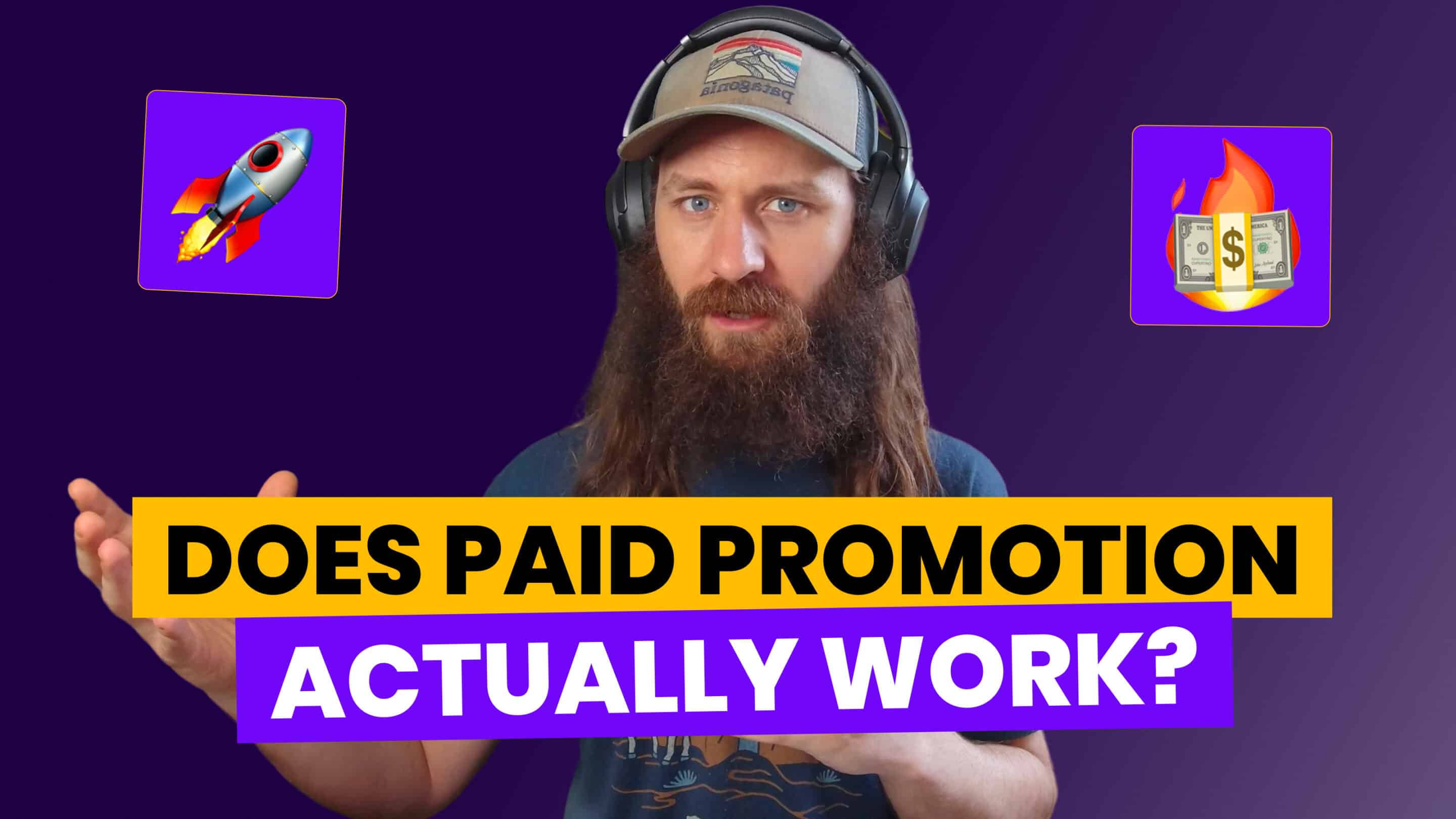
Paid Podcast Growth: Money Pit or Growth Hack?
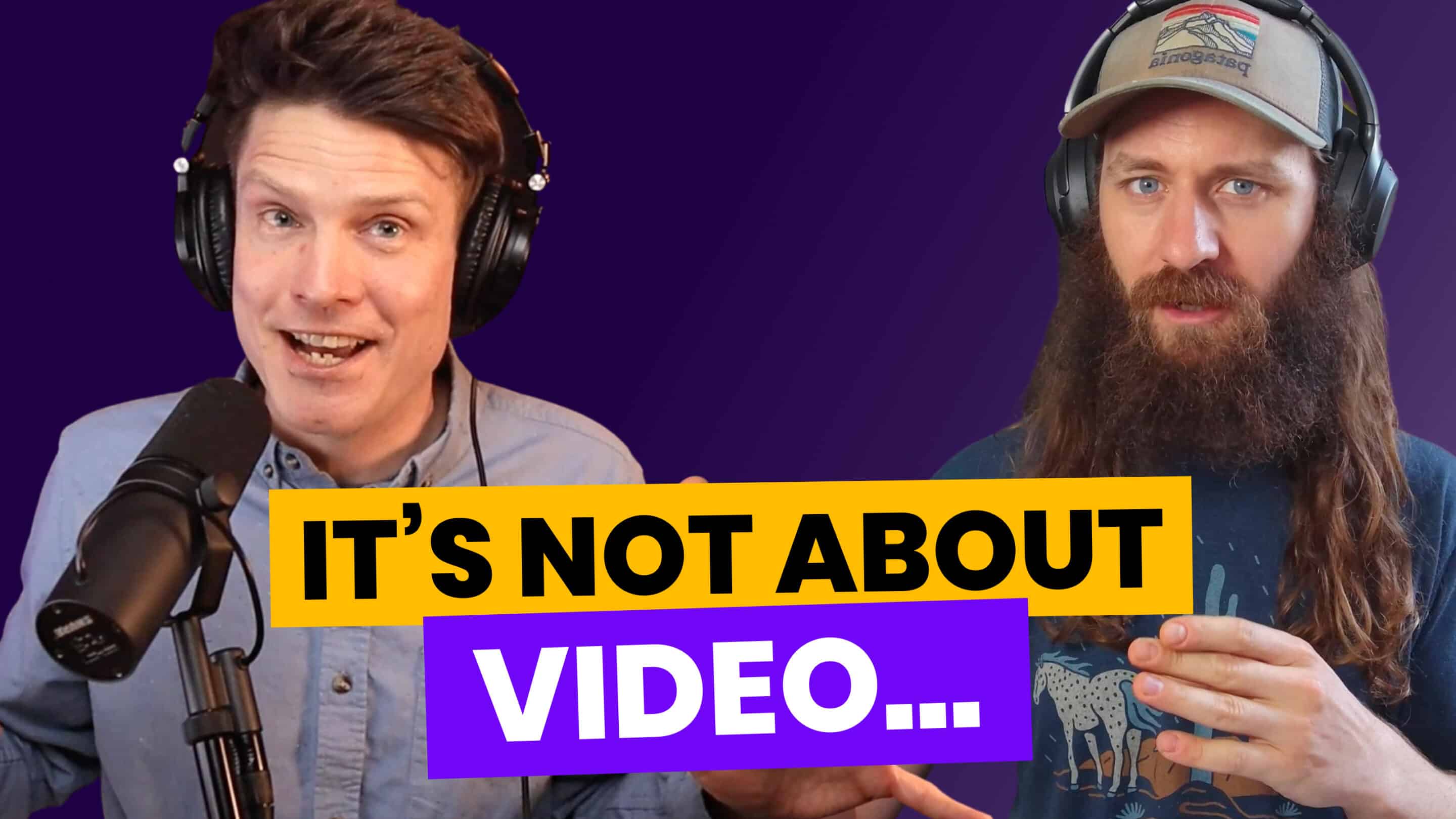
What Everyone’s Getting Wrong About Video

This Obscure Marketing Theory Explains Why Podcasts Grow
04
What High-Growth Podcasts Do Differently
There’s no doubt structural elements such as topic, format, and length play an important role in growth.
But what about the day to day and week-to-week marketing and promotional activities?
Heres what we found.
Monthly Podcasting Budget
Key Takeaway
One of the most common sentiments to emerge from this report each year is podcast creators’ desire to have more budget to invest in their show.
What’s notable about this year’s budget data, however, is that the highest growth shows actually had the lowest budgets, even after having filtered out brand new shows with low starting download numbers.
Also worth considering is the fact that the monthly podcast budgets correspond perfectly with the median annual revenue of each growth group as follows:
High Growth: $10,000
Mid Growth: $75,000
Low Growth: $175,000
Shrunk: $125,000
Weekly Time Investment (Hours)
Key Takeaway
The clear outlier in this group is the low-growth shows, which tended to invest significantly more time—specifically on production—than the other groups.
When you consider that the low-growth shows tend to be the longest-running, most firmly established shows (not to mention those with the most resources), it makes sense that these shows invest the most time into their shows.
On average, these low-growth (but often large) shows were also more likely to have employees, contractors, and work with agencies, which—while not accounted for here—further inflates the total number of person-hours allocated to each episode.
Keep in mind, almost all of the shows in this low-growth category were already averaging more than 1,000 downloads per episode, the highest average of any group, making it harder for them to achieve as significant growth numbers as other groups.
So while the chart may seem to suggest that investing more time into your show won’t lead to greater growth, what’s actually going on is the opposite:
That the hosts that invest the most time into their shows are those that have already built up the most sizable audiences.
How Effective Are Various Podcast Marketing Channels
We asked respondents to rate the effectiveness of each of the marketing channels they’d employed over the past year on a scale from 0 (Not Effective) to 10 (Highly Effective).
Here’s what they told us.
Regularly Used Social Channels
Stop Guessing. Start Growing.
This report is just the start. Sign up to get a steady stream of (often unorthodox) podcast growth & marketing ideas through our Scrappy Podcasting Newsletter.
05
Strategy & Creative Practice
New this year, we wanted to dig into the behind-the-scenes strategy and creative practices of our respondents.
Here’s what we learned.
What Matters Most For Growth?
We asked our respondents to rank the following growth factors from most to least important in regards to their impact on growth.
The lower the number the higher the rank.

Key Takeaways
At first glance we were encourages to see that a “Unique and compelling show concept” was ranked as the most important factor for growth. Because in our experience, it probably is.
But as encouraging as that data point was, it’s worrying to see “Show packaging” ranked as the least important factor (by a wide margin) for growth.
As the first impression most potential listeners will have of a show, we’d argue show packaging is of crucial importance for growth, acting as the very first filter which gets new audiences to either lean in… or tune out.
Self-Described Podcast Marketing & Growth Strategy

Key Takeaways
It’s not surprising, but it is sad to see how few creators have a marketing & growth strategy based on data and informed experimentation.
Unsurprisingly, the biggest shows were least likely to lack any kind of strategy, and most likely to have a strategy based on data, but even then, it’s notable that only 25% of shows with more than 10k dl/ep are following a well-defined strategy for growth.
Thought Put Into Strategic Positioning
Strategic positioning within a show’s larger category is one of the most important considerations for audience growth.
We asked respondents to rate the level of thought they devoted to their own show’s positioning in their space on a scale of 1–10.
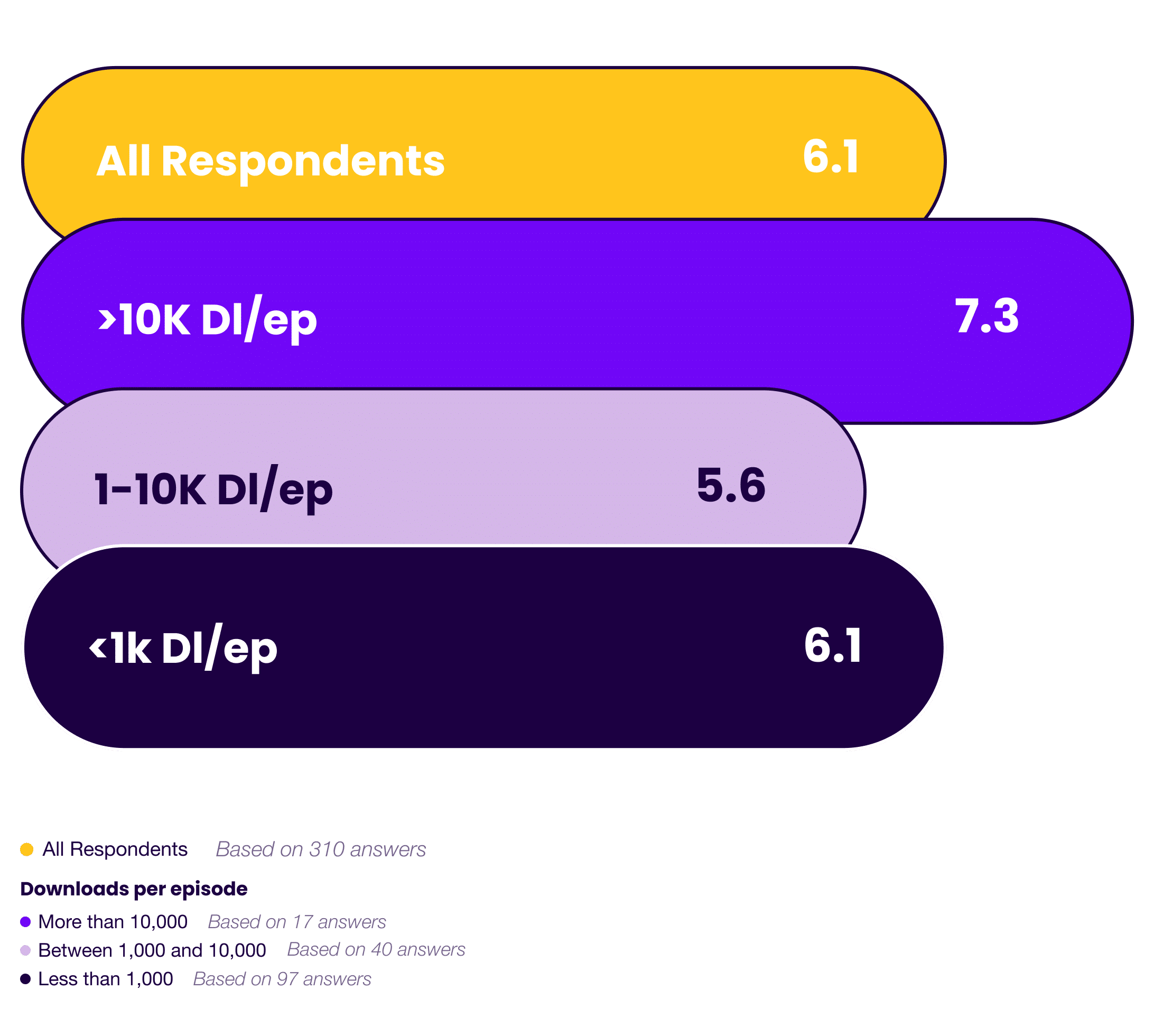
Number of All-Time 1:1 Listener Research Conversations
As with sales and product marketing, the more conversations you’ve had with your ideal listeners, the more effectively you’ll be able to “sell” your show to potential new listeners with language that will resonate.
Here’s how many 1:1 listener research conversations our respondents have had, broken down by show size.

Key Takeaway
Across the board, the clear takeaway is that the biggest shows spend more time thinking strategically about their shows and marketing activities.
Of course, some of the activities, like direct research conversations with audience members become easier the more audience members you have, but it’s still striking to see that the biggest shows have had more than double the number of conversations with listeners as the typical show.
On the other hand, it’s a tad surprising to see how few listener conversations the biggest shows have had, given their likely potential for more.
In our experience, direct 1:1 conversations with listeners are one of activities that has the clearest and most immediate effects on increased growth and revenue generation, and we regularly recommend our clients set up systems to enable 2-4 of these calls per month.

Does Social Media Actually Grow Your Podcast Audience? (& If Not, What Are Your Other Options?)

How We'd Spend $500/$2,500/$10,000 to Grow Our Podcast (& the Lessons You Can Apply to Any Budget)

The 10k Timeline: How Long It Actually Takes to Reach 10k dl/ep (& How to Accelerate the Process)
06
Podcasting & Video
There has been no topic that has dominated conversation in the podcast industry over the past year as much as video.
No surprise then that we wanted to understand how our respondents were thinking about and employing video.
How Respondents Think About YouTube & Video Podcasting

Time Spent on Video Over The Previous Year
Types of Video Content Created

Time Spent on YouTube-Specific Packaging

Key Takeaway
It’s not uncommon to hear serious YouTubers talk about spending dozens of hours brainstorming and testing each video’s packaging (Title & Thumbnail) — often before even beginning the scripting or production process.
The reason, is that the content and quality of your video doesn’t matter if you can’t get people to click. And if you can’t get people to click, the algorithm won’t show your video.
What’s interesting about this datapoint is that while many podcasters are clearly eager to make use of YouTube, it seems that few are currently putting in the work to make the most of YouTube and give their shows and episodes a real shot at algorithmically assisted growth.
YouTube Audience Size & Engagement
YouTube Video Podcast Click Through Rate
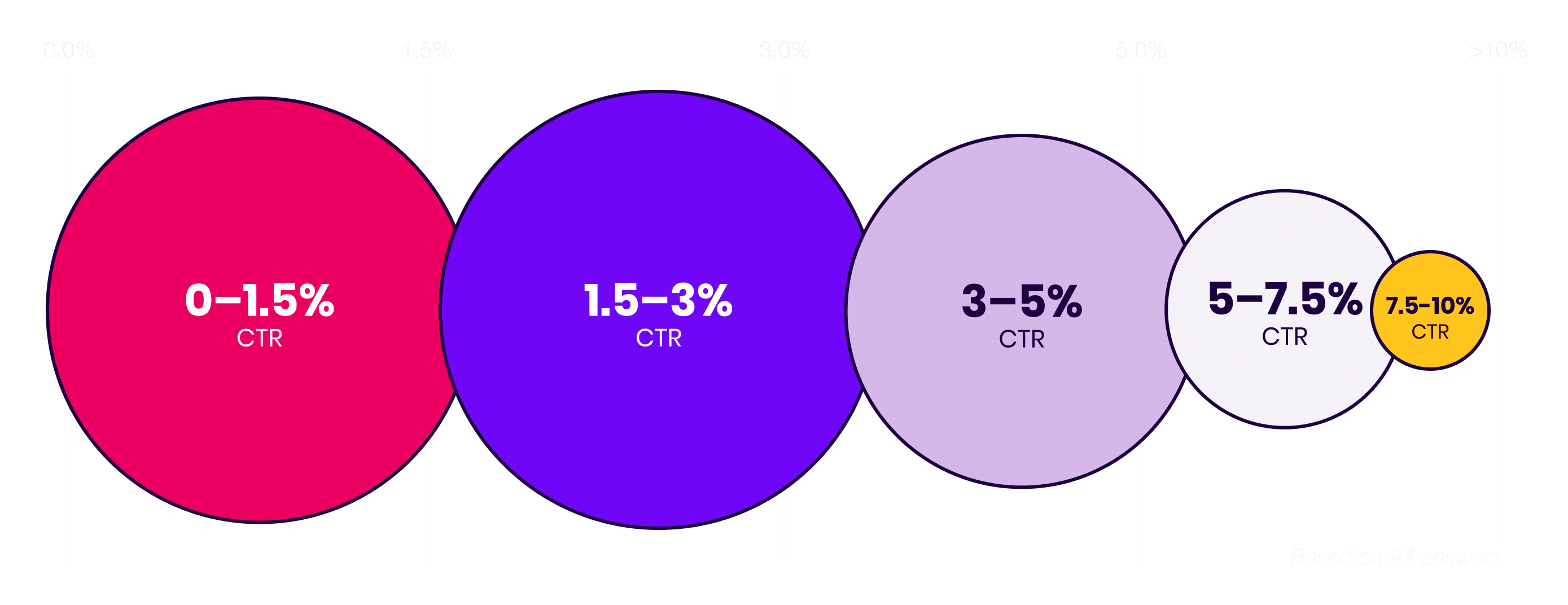
2.25%
Median Click Through Rate
Average YouTube Video View Duration
There’s a lot YouTube can offer podcasters in terms of discoverability. But YouTube as a platform tends to skew toward shorter form content than audio-only podcasts.
So how much of an impact does the consumption platform have on, well… consumption?
7.5 min
Median Average View Duration

Key Takeaway
There are a couple of important points to unpack regarding video podcasting—and podcast consumption of all kinds—on YouTube.
The first is the comparison between the median podcast consumption on YouTube (7.5 min) to that of audio-only podcasts (24 min), which highlights the strength of traditional audio-only podcasting when it comes to holding an audience’s attention.
The second is the comparative audience sizes between the two mediums.
Our respondents reported a median of 1,246 audio downloads per month (across all platforms) compared to 967 YouTube views a month.
While audio still has the edge, it’s clear that YouTube is a significant source of consumption for the typical show.
Perhaps what’s more interesting, however, is that YouTube is accounting for nearly half of all “plays” for the typical show without most shows doing much to optimize their shows or episodes for YouTube — via more in-depth video production, time spent on video packaging, etc.
This suggests that most shows are only scratching the surface of the exposure and consumption they could achieve with the investment of more time and resources and a dedicated YouTube strategy.
That the data also suggests that there is plenty of potential upside on YouTube for the typical show to take a more minimalistic approach—as demonstrated by our respondents this year.
Stop Guessing. Start Growing.
This report is just the start. Sign up to get a steady stream of (often unorthodox) podcast growth & marketing ideas through our Scrappy Podcasting Newsletter.
05
Closing Thoughts
What Works (& What Doesn’t) For Podcast Growth?
Finally, we asked respondents to describe in their own words what they had done in the past year that they felt was most effective when it came to growing their show, and least effective.
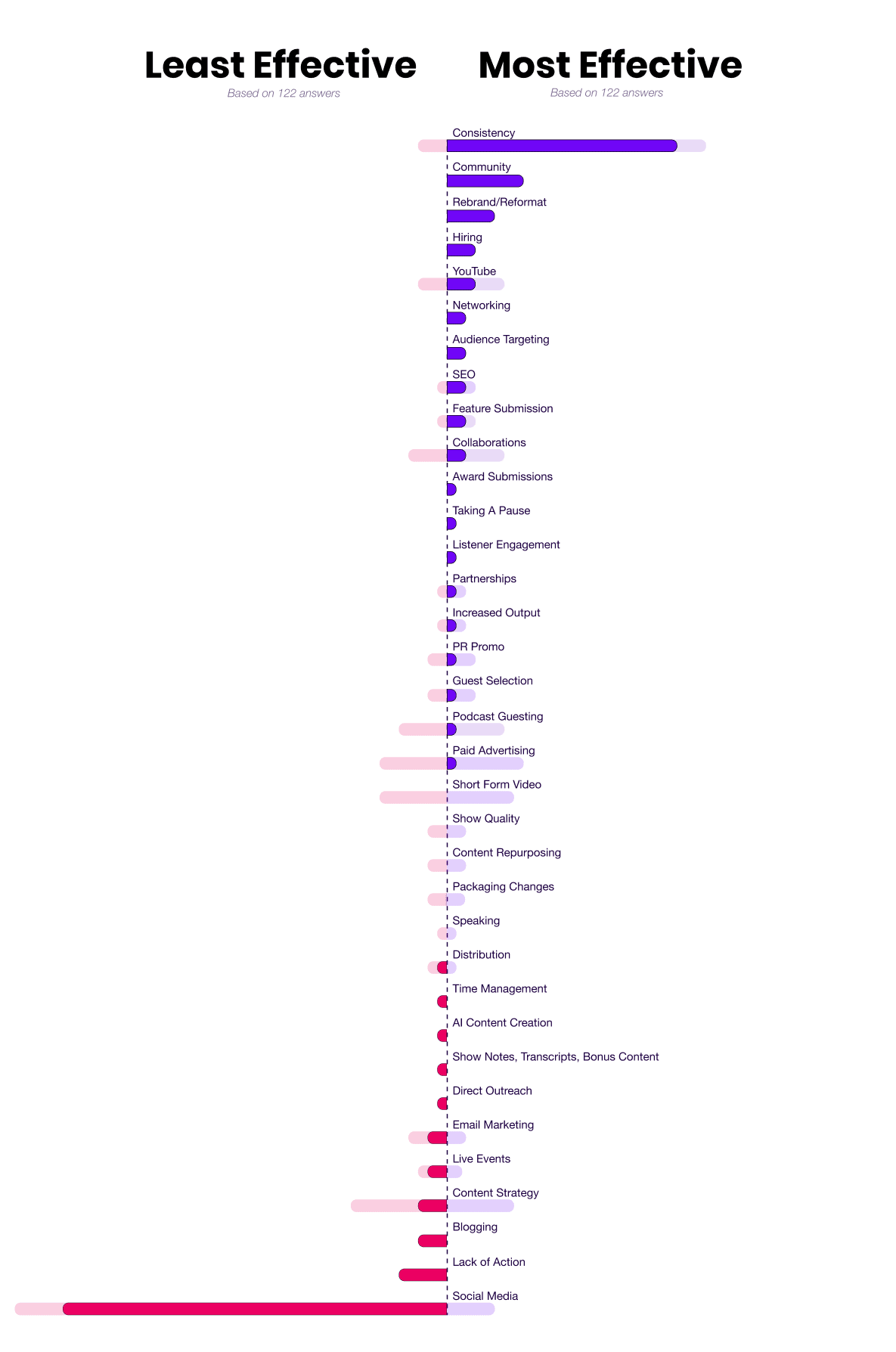
One last thing before we close this thing out.
There will always be trends and commonalities that seem to define the biggest and highest growth shows
But there will also always be outliers.
There’s no one way to grow a show.
No one format, topic, or strategy.
So don’t be afraid to buck the trend and experiment with whacky, scrappy, and unorthodox marketing strategies that no one else is doing.
They won’t always work.
But every now and then, they win big.
As with all marketing, the only way to find out is to test it.
So keep testing and share with us what you’ve learned for next year’s report.
We’ll do the same.
Deal?
Presented By

With Support From


06
Additional Podcast Marketing Resources
More Data-Driven Insights
Decode The Spotify Discovery Algorithm
The Spotify algorithm is one of the best ways to increase your exposure. But it’s also an incredible tool to help diagnose issues that are keeping you from more listeners on every platform.
Learn what the data says and how to leverage Spotify’s tools to grow faster.
Read Our In Depth Guides
The 4 Phases of Podcast Growth
If your marketing isn’t working, there’s a good chance it’s because you’re using the wrong tactics for the phase of growth you’re in. Here’s how to use the right marketing strategy at the right time
How to Become A Better Podcast Interviewer
A practical guide to improving your interviews, episodes, and guest relationships using the hidden skills, traits & practices behind truly great guest interviews.
The Definitive Guide to Podcast Hooks
The dark art & curious science of crafting a podcast that worms its way into your listeners’ minds and refuses to leave.
Subscribe To Our Free Content

Daily Podcast Marketing Micro Lessons
A daily newsletter breaking down the mechanics and the magic of making and marketing podcasts that grow, sell, and resonate.

Data-Driven Podcast Marketing Insights
Exploring the data behind the biggest and fastest growing shows to help you make better, smarter, more effective marketing decisions for your show.
Work With Us

A Step-by-Step Playbook to Your First 500 Podcast Subscribers
First500 is a self-paced video course and playbook walking you through the single hardest phase of podcast marketing: Gaining initial traction.
First500 Is Designed For:
- Established shows that have hit a plateau at fewer than 500 downloads per episode
- New shows that are looking to develop their ongoing post-launch marketing strategy
- Hosts who are new to—or intimidated by—marketing and looking for a straightforward, easy-to-follow playbook to get started
- Business owners, creators, and podcast managers looking for the 80/20 solution to gaining traction without spending hours consuming content.

Personalized, On-Demand Podcast Strategy For Businesses & Pro Creators
The PMA Membership gives you on-demand access to everything you need to grow your show, including personalized strategy & feedback, 100+ hours of podcast marketing training, dozens of step-by-step marketing playbooks, weekly coaching calls, a community of growth-oriented podcasters, and more.
The PMA Membership Is Designed For:
- Experienced business owners, professional creators, marketers, and podcast professionals looking for ongoing personalized marketing support
- Established shows that have been podcasting for at least a year and are looking to accelerate growth
- Brands & business owners looking to increase client acquisition and podcast-driven revenue
- Hosts looking to build (or grow) a robust cross-channel marketing strategy around podcasting, email, video, social, and more
Or, if you’re feeling especially saucy, you can apply to work with us directly via a personalized podcast audit, custom growth plan, and ongoing 1:1 marketing support.
Special thanks to these creators & shows for generously contributing their monthly download data.


